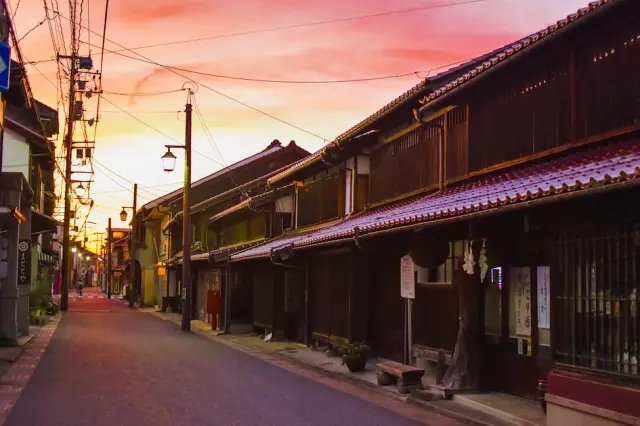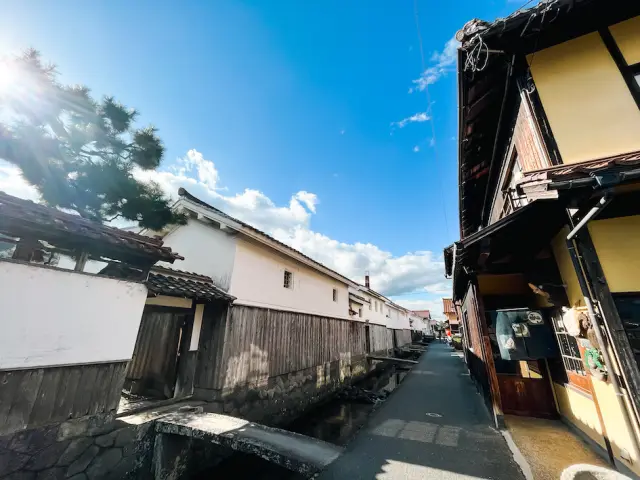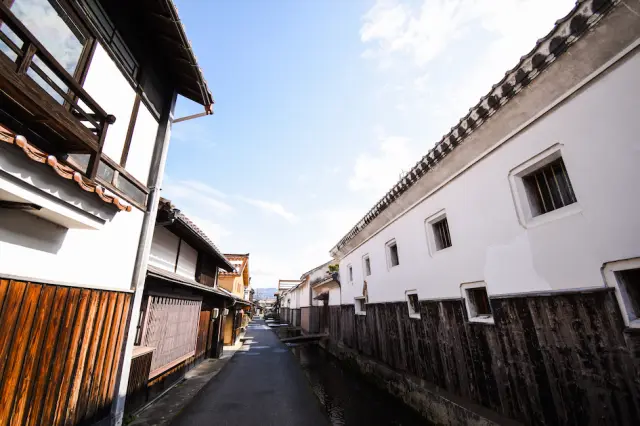This is a National Important Preservation District for Groups of Traditional Buildings, where old merchant houses and storehouses built between the Edo and Taisho periods are lined up along the Tamagawa River. The area flourished as the castle town of Uchibuki Castle in the Muromachi period (1336-1573), and during the Edo period (1603-1868), samurai residences were built around the camp, making it a historical area with a beautiful townscape, also known as "Little Kyoto”.
The lower half of the buildings has black cedar shingle hip walls, the upper half has white plaster walls, and the roofs are unified with red Sesshu tiles. The area consists of Honmachi-dori lined with the main buildings of merchant houses and Tamagawa-dori lined with storehouses. There are 15 pavilions called "Red roof tiles," which are key tourist attractions in the white-walled storehouse complex, and are used as souvenir stores, cafes, and workshops. Red roof tile No. 10 is the first place to stop as it serves as a tourist information center.
There are many breweries in the surrounding area, including sake and soy sauce breweries, and the area has been selected as one of the "Kaori fukei 100 Selection (100 best aromatic landscapes)" and "Beautiful Japanese Historical Climates 100 Selection”. The shopping street is filled with retro charm, with many signboards from the Showa period remaining.
Highlights
-
The unique landscape is lined with red sesshu-tiled warehouses.
-
The red tiles are unique to the San'in region and originated from the Sesshu roof tiles in the Iwami region of Shimane Prefecture.
-
Locally brewed sake, beer, and wine can be enjoyed here.
-
Near the white-walled storehouses, there are several attractions such as the Tottori Prefectural Museum, the ACEPACK NASHIKKOKAN, and the Enkei Gekijo Kurayoshi Figure Museum.








